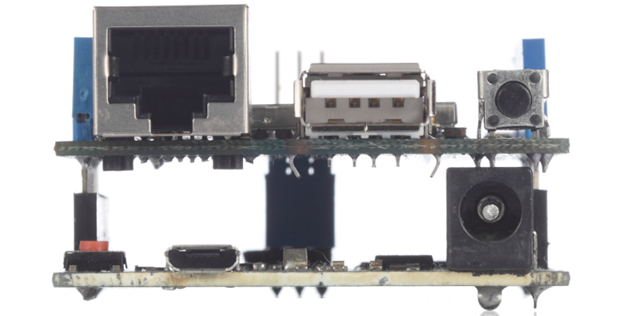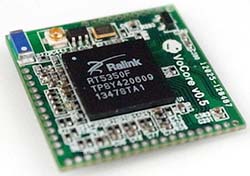Late last week, Anonabox hit Kickstarter, glomming on to concerns over security, privacy, and censorship. The project was picked up on the usual tech blogs, lauding this project as the pinnacle of the Open Source, Open Hardware movement and a great investment for the privacy-minded technocrat in a post-Snowden world.
Then, the creator of Anonabox did an AMA on reddit. It was quickly discovered that the entire project was an off the shelf router found on AliExpress with reflashed firmware. The router sells for $20 in quantity one, and the Anonabox Kickstarter is giving them away with a minimum $51 pledge. The new firmware is basically a standard OpenWrt installation with a few changes to the config files. The project claims to solve the problem of hardware backdoors, but ships with a backdoor root password (the password is ‘developer!’), open WiFi, and ssh open by default. The Anonabox also claims to be a plug and play solution to security and privacy on the Internet, meaning if this project ever ships, there will be a lot of people who won’t change the default configuration. That’s rather hilarious in its implications.
According to the Kickstarter campaign, the Anonabox has gone through four years of development and four generations of hardware. [August] even has a great graphic demonstrating that each successive generation has reduced the size in half and doubled the system resources:

Anyone with the slightest eye for detail will quickly realize that components, like Ethernet jacks, SD cards, and CF cards are always the same size. I wonder what this graphic would look like if all the boards were scaled so they were in proportion to each other?

Oh. That’s not fishy at all.
As with most Kickstarters that have seen this much negative attention, the project was suspended just a few hours ago, but not before gathering more than $600,000 in pledges at its peak.

Although the Anonabox failed, there is a market for a Tor-enabled router, and luckily we have one on hackaday.io. It’s so great that some of the copy for the Kickstarter campaign was lifted directly from this project. With a wealth of market research available, we can only hope that [CaptainStouf] runs his own campaign for the UnJailPi.



 ng
ng

 With tiny Linux boards popping up like dandelions, it was only a matter of time before someone came out with a really tiny Linux board.
With tiny Linux boards popping up like dandelions, it was only a matter of time before someone came out with a really tiny Linux board. 










